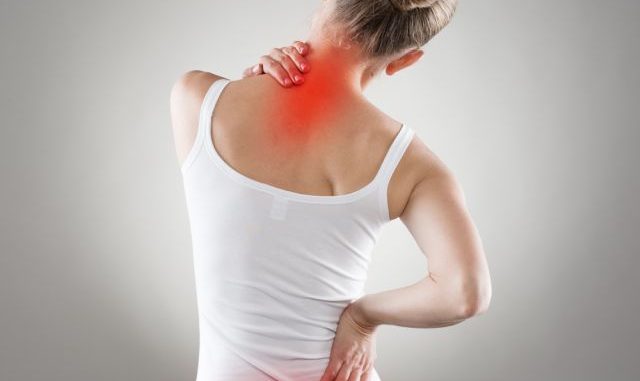
Back pain help is something that the vast majority of the population, both men and women, young and old will need at one time or another.
It’s estimated that between 70 and 90 percent of people in all age groups are in need of back pain help. Knowledge about, and help for back pain is certainly welcome, appreciated and a popular topic.
One of the best ways to begin learning about help for back pain, back pain treatment options and any effective back pain remedy, is by first understanding the basics of back pain: what causes it, how it’s diagnosed, what treatments are available, how to manage the pain, etc.
This in-depth look at back pain treatment will cover the bases for you. Note that the contents here are not presented from a medical practitioner, and that any and all health care planning should be made under the guidance of your own medical and health practitioners.
The back pain treatment here only presents an overview of back pain help, back pain treatment options, various effective back pain remedy alternatives, lower back pain exercise guidelines, and so on, for educational purposes and does not replace medical advice from a professional physician.
“Back Pain Help – The Facts & Myths”
Let’s begin looking at back pain treatment by learning some facts in order to separate truth from myth with regards to back pain.
First of all, under one percent of chronic lower back pain is the result of a serious infection or condition like cancer or a spinal injury. For those under 50, the rate is even lower.
Back pain is the number one disability for those under age 45. And it runs second, after the common cold, as the top reason for visiting a healthcare provider in the United States.
“There is nothing really wrong with you.” Myth! Chronic neck & back pain sufferers report that doctors generally tell this to about 90 percent of them and it is incorrect.
In reality, the majority of lower back pain cases or some 90 percent generally come from an unknown cause, like an infection or a particular injury.
And the duration of the pain runs generally from four to six weeks.
“People don’t die from chronic neck & back pain.” Wrong! The pain combined with depression and anxiety in long-term cases places sufferers at risk for suicide, which does happen from time to time.
“Most back pain requires surgery.” Myth! On the contrary, under two percent of patients in need of back pain help need surgery. However, back pain is the third top reason for surgery.
“Only a small percentage of workers suffer back pain on the job.” Wrong! The top occupational hazard in the USA is back pain.
“Lie down and rest for back pain.” Au contraire. Contrary to popular believe, bed rest can hinder recovery and is not good back pain help. Health care providers recommend remaining active to decrease down time for patients.
“Men are in need of back pain treatment more than women.” Not! With regards to gender issues and back pain help, it is a myth that men suffer back pain more than women.
In reality, the only main difference is with secondary pain to disk disorders during middle age. However, with regards to race, lower back pain is reported more frequently among Caucasians than other races including African Americans.
“If a patient’s back pain description lacks a regular, consistent pattern, it’s probably imagined or exaggerated.” Myth! No two people, no two cases are totally 100 percent identical.
Activities, events, back pain and people themselves vary from day to day and there is no 100 percent correct way to describe pain in words to fit a perfectly accurate diagnosis.
Click here for the quickest and best back pain help. Or you can continue reading this information on back pain help.
“Back Pain Help – Types & Terms”
To learn more about specific types of back pain and the back pain treatment you require, it helps to identify the “type” of back pain present, similar to a doctor visit when asked, “Is it a stabbing pain or dull ache?”
These are helpful healthcare terms associated with back pain:
ACUTE – Most people in need of back pain help fall into this category. With acute lower back pain, certain movement ranges for activities may be limited due to pain. But most people recover within about four weeks on their own.
CHRONIC – Also referred to as recurrent lower back pain or when acute pain episodes recur for more than three months. This is most generally when medical treatment is sought.
Note one can suffer acute and chronic back pain at the same time. As secondary health problems be involved. In other words, chronic pain sufferers can be susceptible to acute pain.
ONSET – When the back pain began. Acute onset means it occurred suddenly and you need back pain treatment immediately. Insidious onset means it gradually developed over a period- could be days or longer.
DURATION / FREQUENCY – Some common questions asked with regards to this area are how often does the worse pain occur and how long does it last.
RECURRENCE – When the back pain occurs from time to time with intervals of no pain in between.
PERSISTENCE – When the pain is always present.
LOCATION – A printed body diagram is usually used to that the patient can refer to the place or location where pain is felt.
MOVEMENT – Where the back pain movement is located. Most generally it is centrally located in the middle of the spine or an injury to either side of the spine. Pain that reaches beyond, for example to legs, is known as peripheral.
Other terms associated with movement are twisting, lifting, bending, straightening, arching, vibrating, sneezing, coughing and posture.
ASSOCIATED SYMPTOMS – When discussing back pain and back pain help, other symptoms that can come up include, but are not limited to, itching, burning, tingling, weakness or numbness, bladder control loss or change in habit, nausea.
INTENSITY LEVEL – A verbal measurement used to quantify pain on a scale rating from zero that signifies “no pain” to 10, referring to your “worst pain ever.”
Other criteria to help with understanding this pain indicator are does the scale vary; i.e. does the pain intensify and if so with each occurrence? And within what range on the scale?
“Back Pain Help – Diagnosing Back Pain”
In order to diagnose back pain for the proper back pain help, back pain relief, back pain treatment options, various effective back pain remedy alternatives, lower back pain exercise guidelines, and so on, generally health care professionals begin by ordering a medical history and physical examination.
A look at each of these in depth can shed some light into what to look for and how to find back pain treatment. Then we’ll look at specific diagnostic tests. And then where to go for the diagnosis and testing follows.
No matter whether the patient has acute back pain, which is what most have and recover from with around a 4-week period, or chronic, recurring pain episodes, a medical history helps patient an doctor become familiar with one another in confidence to begin or continue a treatment program together.
The medical history delves into these areas of the person seeking back pain help: family medical history and personal and work history with regards to back pain help and related symptoms and issues, psychological and psycho-social factors, referral source(s) for evaluation and treatment, education on the subject and back pain treatment options, assessment throughout their working together on pain relief treatment and treatment outcomes.
For example, if physical therapy needs to be added to the regimen or enhanced, it would be discussed in the medical history and updated as needed.
The medical history incorporates past and present factors of fatigue, fever and weight loss. And it notes any use of drugs or herbs, minerals and supplements. A history of past and present infections, cancer or other conditions is also noted.
The history also includes details about the back pain, focusing on the many facets of the pain: information about any initial injury or trauma, if available, onset, intensity, duration, location, associated symptoms, etc.
The physical examination portion of any back pain treatment includes evaluating the person generally in the “hospital gown” with the body and especially the back in a variety of postures and movement ranges to determine pain symptoms, tenderness and range of motion and the proper back pain help needed.
So the patient may need to sit, stand, touch toes, move arms, etc. and share any pain symptoms or other information notated with each change along the way.
Neurological testing can also be a part of the back pain help routine.
A neurologic screening may consist of tests for reflexes, strength of muscles, cramping and a detailed look at sensory issues via various range of motion and movement exercises.
Included in this portion of back pain help can be an assessment of the legs, upper leg, hip and groin area and pulses for neurological and vascular conditions.
Results may point to a secondary problem like kidney stones or a slight bone fracture, for instance, in which cases, further assessment and treatment options would be considered and discussed in both the medical history and physical examination.
Noteworthy is that patients seeking back pain help after an extended period can tend to exaggerate or magnify their symptoms out of a variety of reasons; possibly psychological factors associated with fear of the unknown, change, coping alternatives, insurance coverage and treatment costs, previous visits with health care providers, etc.
So education and patience is advised so that all bases can be covered, i.e. so that effective back pain help can be determined.
Diagnostic Testing: For back pain help, any of several tests can be performed; x-rays or radiographs, isotope bone scan (referred to as technetium and SPECT), magnetic resonance imaging (MRI), computerized axial tomography (CAT) scan, myelogram, blood and nerve tests and injections.
